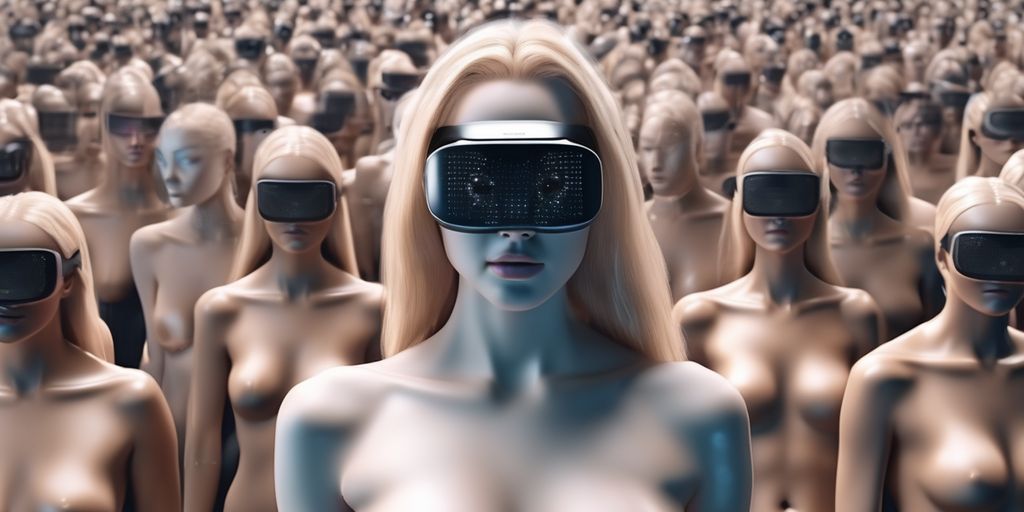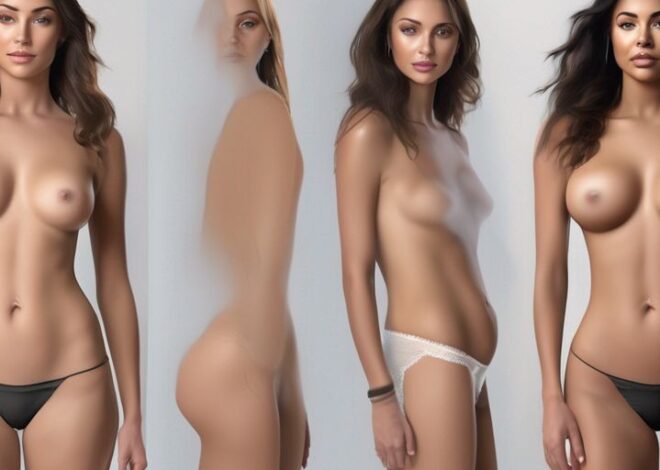
How AI that Undresses People is Shaping Discussions Around Privacy and Consent
The advent of AI technologies capable of digitally removing clothing from images has sparked intense discussions about privacy, consent, and ethics in the digital age. This article delves into how such technologies, exemplified by platforms like Nudify.Online, are not only pushing the boundaries of AI capabilities but also challenging societal norms and legal frameworks around personal privacy and consent.
Key Takeaways
- AI technologies like Nudify.Online are reshaping the discourse on digital consent and privacy by enabling the removal of clothing in images.
- Legal frameworks are currently lagging, prompting a need for updated regulations that address the unique challenges posed by clothes-removing AI.
- Privacy concerns are heightened as these technologies can be misused, leading to potential invasions of personal privacy and security risks.
- The concept of consent is being redefined in the digital realm, necessitating clear guidelines and enforcement mechanisms for AI-enhanced content.
- Ethical considerations and public outcry are influencing the development and deployment of these technologies, pushing for responsible innovation.
Overview of AI Technologies that Remove Clothing in Images

How Nudify.Online Works
Nudify.Online is an advanced web-application designed to strip off clothes from people on images online, using the most advanced clothes-removing AI technology of 2024. This application leverages deep learning techniques to analyze the image and reconstruct the person’s appearance without clothes, providing a realistic yet digitally altered image.
Technological Advances in AI Image Processing
The field of AI image processing has seen significant advancements, particularly in the areas of deep learning and neural networks. These technologies allow for more accurate and realistic image alterations, including the removal of clothing. The ability to process vast amounts of data has been crucial in training these AI systems to perform such sensitive tasks effectively.
Ethical Considerations
The development and use of AI technologies that undress digital images raise profound ethical questions. It is essential to consider the implications of privacy, consent, and the potential for misuse. Developers and users must navigate these concerns carefully to ensure that these technologies are used responsibly and ethically.
Legal Implications of Using AI to Undress Digital Images

Current Laws and Regulations
The legal landscape surrounding AI technologies that undress digital images is complex and varies by jurisdiction. Most existing laws were not designed to address the nuances of AI-generated content, leading to potential legal loopholes. For instance, many jurisdictions have strict regulations against non-consensual pornography but lack specific clauses for AI-generated images.
Potential Legal Reforms
To address the emerging challenges posed by AI in digital imaging, several potential legal reforms are being considered. These include amendments to digital consent laws and the introduction of specific regulations targeting AI-generated content. A list of proposed reforms includes:
- Establishing clearer definitions of digital consent
- Creating penalties for unauthorized AI image manipulation
- Mandating transparency from AI developers about the capabilities of their technologies
Global Legal Perspectives
Different countries have varying approaches to handling AI-generated images. For example, in the European Union, strict GDPR regulations provide a framework that could potentially cover AI-generated images under the right to privacy. However, in countries with less stringent digital rights laws, the protection against such technologies is minimal. This disparity calls for a global dialogue and unified standards to protect individuals’ rights across borders.
Privacy Concerns with Clothes-Removing AI

Invasion of Privacy Issues
The use of AI technologies that undress digital images poses significant invasion of privacy issues. Individuals may find their images manipulated without their consent, leading to personal violations that are difficult to detect and rectify.
Risks of Misuse
These technologies, while innovative, carry substantial risks of misuse. Malicious actors could exploit these tools to harass or blackmail individuals, significantly impacting the victims’ lives.
Impact on Personal Security
The potential for these technologies to compromise personal security is alarming. The ease with which personal images can be altered and disseminated can lead to identity theft, stalking, and other security threats. Effective countermeasures are essential to protect individuals from such invasive technologies.
Consent in the Age of AI-Enhanced Images

Defining Consent for Digital Content
In the digital age, the definition of consent has become increasingly complex. Consent must be informed, explicit, and revocable at any time to ensure ethical use of AI technologies that manipulate images. The challenge lies in ensuring that all digital content creators and users understand and adhere to these principles.
Challenges in Enforcing Consent
Enforcing consent in the digital realm is fraught with challenges. The transient and replicable nature of digital content makes it difficult to track and manage consent once an image has been shared or altered. This is compounded by the rapid advancement of AI technologies that can alter images in ways previously unimaginable.
Public Perception of Consent
Public perception of consent regarding AI-enhanced images is often influenced by high-profile cases and media coverage. For instance, the case of a Microsoft AI engineer encountering disturbing images highlights the potential misuse of AI in creating inappropriate content. This incident underscores the importance of robust consent mechanisms to prevent misuse and maintain public trust in AI technologies.
The Role of AI Ethics in Developing Undressing Technologies

Ethical Guidelines for Developers
Developers of AI technologies that undress digital images face significant ethical challenges. They must ensure that their creations are used responsibly and do not infringe on individuals’ rights. Establishing clear ethical guidelines is crucial for maintaining public trust and ensuring the technology is used for legitimate purposes only.
Responsibility of Tech Companies
Tech companies play a pivotal role in shaping the ethical landscape of AI applications. They must enforce strict compliance with ethical standards and actively monitor the use of their technologies to prevent misuse. This includes implementing robust data protection measures and promoting transparency in AI operations.
Influence of Public Outcry
Public opinion can greatly influence the development and deployment of controversial AI technologies. When ethical concerns lead to public outcry, companies are often compelled to reconsider their strategies and align their practices with societal values. This dynamic underscores the importance of ongoing dialogue between tech companies, ethicists, and the public to navigate the complex ethical terrain of AI.
Impact on Society and Cultural Norms

Changing Social Perceptions
The introduction of AI technologies that can digitally undress images is significantly altering social perceptions of privacy and body image. Public attitudes are shifting, with increasing debates on the normalization of such technologies and their implications for personal boundaries.
Cultural Backlash and Acceptance
While some view these AI applications as innovative, others see them as invasive, leading to a cultural backlash. This division is particularly evident in varying responses across different societies, where traditional values may conflict with technological advancements.
Future Predictions
The trajectory of these technologies suggests a future where digital interactions could become even more complex. As AI continues to evolve, societal norms will need to adapt, potentially leading to new forms of regulation and ethical considerations.
Technological Countermeasures and User Protection

Tools to Protect Against Unwanted AI Exposure
In response to the increasing capabilities of AI technologies like those that undress digital images, several protective tools have been developed. These include image watermarking, AI detection software, and privacy filters that help in identifying and blocking AI-manipulated content. These tools are essential for maintaining digital privacy and integrity.
Educating Users on Digital Rights
It is crucial to educate users about their digital rights and how to protect themselves online. Workshops, online courses, and informational campaigns can play a significant role in spreading awareness. Understanding the risks associated with AI technologies and knowing how to use countermeasures effectively can empower users to safeguard their digital presence.
Advancements in Protective AI
As AI technology evolves, so do the methods to counteract its potential misuse. Developers are now creating more sophisticated AI systems designed to detect and neutralize unwanted AI interventions. These advancements are pivotal in ensuring that AI technologies are used responsibly and ethically.
Conclusion
The advent of AI technologies like Nudify.Online, which can digitally remove clothing from images, raises significant ethical, privacy, and consent issues. As these tools become more advanced and accessible, the potential for misuse escalates, necessitating a robust discussion and reevaluation of our current privacy laws and ethical standards. It is imperative for policymakers, technologists, and the public to engage in meaningful dialogue to address these challenges, ensuring that innovation in AI does not come at the expense of individual rights and dignity.
Frequently Asked Questions
What is Nudify.Online?
Nudify.Online is an advanced web-application that uses AI technology to digitally remove clothes from images of people online, utilizing the most advanced clothes-removing AI technology as of 2024.
How does AI that undresses images work?
This type of AI uses complex algorithms to analyze the images and predict what the person might look like without clothes. It then reconstructs the image with the clothes digitally removed.
What are the legal implications of using AI to undress digital images?
The use of such AI can raise legal issues related to privacy, consent, and copyright infringement. Different jurisdictions may have varying laws concerning digital manipulation of personal images.
Are there any ethical concerns associated with AI that removes clothes?
Yes, ethical concerns include privacy violations, potential harm to individuals’ reputations and personal security, and the broader implications of consent in the digital age.
What can be done to protect against misuse of clothes-removing AI?
Implementing stricter regulations, developing ethical guidelines for AI development, and creating technological countermeasures to detect and block unauthorized image manipulations are potential measures.
How is public perception shifting regarding AI that undresses images?
Public perception is mixed, with some viewing it as a technological advancement and others as a serious breach of privacy and ethical standards. The debate continues to evolve as more people become aware of the technology and its implications.



